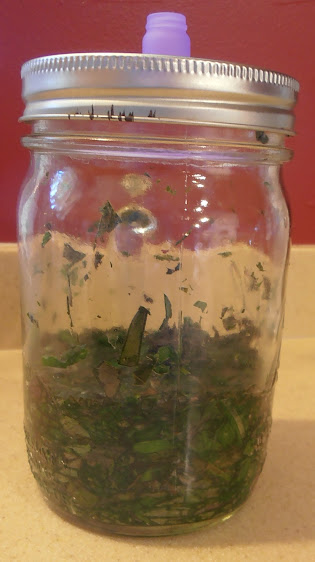I was looking for interesting recipes that used figs, and this time I found one that wasn't a dessert or other sugary preparation. It is from the book Take a Thousand Eggs or More, a Collection of 15th Century Recipes by Cindy Renfrow. In particular, this is Volume Two.
 |
| ISBN 0-9628598-2-6 |
Tart of fruit
Take figs, and seethe them in wine, and grind them small, And take them up into a vessel; And take powdered pepper, Cinnamon, Cloves, Maces, powdered ginger, pine nuts, great raisins of Corinth, saffron, and salt, and cast thereto; and then make fair low coffins, and put this stuff therein, And plant pine nuts above; and cut dates and fresh salmon in fair pieces, or else fresh eels, and parboil them in a little wine, and put them thereon; And cover the coffins fair with the same paste, and glaze the coffin without with saffron & almond milk; and set them in the oven and let bake.
My Redaction
1 lb. fresh figs, stems removed, about 20. (Or less if dried, see notes below.)
1/2 cup red wine
A small handful of almonds, about 1/2 ounce by weight; chopped, ground, or pounded into small pieces
4 or 5 threads of saffron
About 1/2 cup boiling water
enough pie crust dough to make a double crust
1/4 tsp. ground pepper
1/2 tsp. ground cinnamon
1/16 tsp. ground cloves
1/8 tsp. ground mace
1/8 tsp. ground ginger
1/2 cup pine nuts, divided in half
1/2 cup currants
another 6 or so threads of saffron, crushed between your fingers
1/8 tsp. salt
8 ounces fresh salmon, cut into bite-sized pieces
6 ounces dates, pitted and sliced
 |
| Everything except the dough, almond milk, and fig-wine filling. |
Preheat the oven to 425 degrees F.
Chop the figs. Put them in a small saucepan with the wine. Bring to a boil then reduce the heat and then cover and simmer until they are tender, about 5 to 7 minutes. Allow to cool while you are making the rest of the recipe.
Then make the almond milk by mixing the ground almonds and threads of saffron with boiling water and allowing it to steep until cool. Strain the resulting almond milk from the mix by pouring it all through several layers of cheesecloth, a fine sieve, or a cloth bag. Set the almond milk aside for the end of the recipe.
Line a pie pan with the lower crust, leaving some extra dough at the edges to help seal the second crust.
Mix the spices, 1/4 cup pine nuts, currants, broken saffron, and salt in a bowl, then add the cooled figs and wine. Mix well and put into the pie crust.
Sprinkle the surface with the rest of the pine nuts, add a layer of the chopped dates, and then the salmon pieces.
Cover with the second crust. Cut some vent holes. Brush the top of the crust with the almond milk.
Bake at 425 degrees F for 15 minutes, then lower the temperature to 350 degrees F and bake another 30 to 40 minutes, until the crust is golden brown.
Let cool a little before cutting and serving.
My Notes
I suspect the recipe was designed to use dried figs. Most recipes seemed to call for them dried, and I can understand why -- the fresh fig season is short and drying figs makes them last through the year.
 |
| Figs and wine. Could be the whole meal right there! |
 |
| Before cooking |
 |
| After cooking |
 |
| Almonds before pounding. You just need a few! |
 |
| Pounded. Making the pieces smaller is fine. |
 |
| Spices, pine nuts, currants |
 |
| The entire bottom layer of filling |
 |
| Bottom layer |
 |
| Pine nut layer |
 |
| Date layer |
 |
| Salmon layer |
 |
| Top crust with glaze |
After my tart had baked for 20 minutes at the 350 degree F temperature, I thought the edge of the crust was at risk of burning, so I put a foil cover on it. Then it baked for another 20 minutes.














